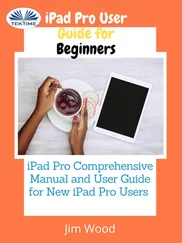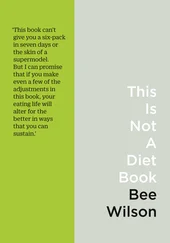Calculation based on World Bank data.
See R. Kozul-Wright and P. Rayment, The Resistible Rise of Market Fundamentalism: Rethinking Development Policy in an Unbalanced World (London: Zed Books and Third World Network, 2007), Chapter 4, for an excellent review of the evidence.
Some of you may remember that Dr Evil in Austin Powers movies plans his world takeover in the Starbucks Tower in Seattle.
On tax havens, see N. Shaxson, Treasure Islands: Tax Havens and the Men Who Stole the World (London: Vintage, 2012), and the website of Tax Justice Network, www.taxjustice.net. At the time of writing (autumn 2013), there has been a lot of talk of a clamp-down on tax havens, especially through the G 20, but no concrete action has been taken.
Christian Aid, ‘The shirts off their backs: how tax policies fleece the poor’, September 2005, downloadable from: http://www.christianaid.org.uk/images/the_shirts_off_their_backs.pdf.
The story of this debacle is told in full in Chang, Bad Samaritans , Chapter 1 (‘ The Lexus and the Olive Tree revisited’).
Further discussions of these measures can be found in N. Kumar, ‘Performance requirement as tools of development policy: lessons from developed and developing countries’, in K. Gallagher (ed.), Putting Development First (London: Zed Books, 2005). A more user-friendly discussion can be found in Chang, Bad Samaritans , Chapter 4 (‘The Finn and the elephant’).
For discussions on how these rules may be harmful for economic development, see H.-J. Chang and D. Green, The Northern WTO Agenda on Investment: Do as We Say, Not as We Did (Geneva: South Centre, and London: CAFOD (Catholic Agency for Overseas Development), 2003), and R. Thrasher and K. Gallagher, ‘ 21st century trade agreements: implications for development sovereignty’, The Pardee Papers no. 2, The Frederick S. Pardee Center for the Study of the Longer-Range Future, Boston University, September 2008; downloadable from: http://www.ase.tufts.edu/gdae/Pubs/rp/KGPardeePolSpaceSep08.pdf.
See Chang and Green, The Northern WTO Agenda , for details on the Irish case.
The average over a period, rather than figures for particular years, has been used because FDI flows fluctuate a lot year by year.
The figures were 9.4 per cent for the UK, 7.8 per cent for China, 4.7 per cent for France, 3.5 per cent for Germany.
They both produced 4.4 per cent of world GDP during this period.
The US got only 15.0 per cent of world FDI despite accounting for 23.1 per cent of world GDP during this period. In the case of France the corresponding numbers were 3.0 per cent against 4.3 per cent, while those for Brazil were 2.8 per cent and 3.0 per cent. In terms of over-represented countries, Belgium and Hong Kong stand out; they got respectively 6 per cent and 4.1 per cent of world FDI despite accounting for only 0.8 per cent and 0.4 per cent of world GDP. The UK (6.8 per cent vs. 4.0 per cent) was also strongly over-represented, followed by China (11.0 per cent vs. 8.5 per cent).
They were China, Brazil, Mexico, Russia, India, Hungary, Argentina, Chile, Thailand and Turkey.
The statistics available for brownfield FDI (that is, cross-border M&A) and for overall FDI flows are not directly comparable to each other. This is for a number of reasons. One reason is that part of cross-border M&A may be financed locally. Another reason is that payments for cross-border M&A may be made over a period, rather than in a single year.
See P. Nolan, J. Zhang and C. Liu, ‘The global business revolution, the cascade effect, and the challenge for firms from developing countries’, Cambridge Journal of Economics , vol. 32, no. 1 (2008).
Philippe Legrain, the author of Immigrants: Your Country Needs Them , is one of the few free-market economists who seriously advocate highly liberalized (although not completely free) immigration.
On the issue of worker rights in immigration, see M. Ruhs, The Price of Rights: Regulating International Labour Migration (Princeton: Princeton University Press, 2013).
But note that ultimately most citizens pay for parts of the costs of such services through taxes.
Of course, this is excluding distress-driven immigration, namely, refugees from civil war or natural disaster in a neighbouring country.
On the debates surrounding the definition of labour shortage, see M. Ruhs and B. Anderson (eds.), Who Needs Migrant Workers?: Labour Shortages, Immigration, and Public Policy (Oxford: Oxford University Press, 2012), Chapter 1.
For example, see C. Dustmann and T. Frattini, ‘The fiscal effects of immigration to the UK ’, Discussion Paper no. 22 / 13 (London: CReAM (Centre for Research and Analysis of Migration), University College London, 2013).
For example, see G. Ottaviano and G. Peri, ‘Rethinking the gains of immigration on wages’, NBER Working Paper no. 12497 (Cambridge, MA: NBER (National Bureau of Economic Research), 2006); downloadable from: http://www.nber.org/papers/w12497.
For a comprehensive discussion of the impacts of remittances, see I. Grabel, ‘The political economy of remittances: What do we know? What do we need to know?’, PERI Working Paper Series, no. 184 (Amherst, MA: PERI (Political Economy Research Institute), University of Massachusetts, 2008); downloadable from: http://www.peri.umass.edu/fileadmin/pdf/working_papers/working_papers_151–200/WP184.pdf).
In Mexico, the government used to match the sum of remittances used for those investments with public grants, but the scheme has been discontinued.
The data on immigrant stock in this and following paragraphs are from the World Bank’s World Development Indicators database.
The remittances data in this and following paragraphs are based on the World Bank’s Migration and Remittances Statistics.
J. W. von Goethe, Sämtliche Werke , Part 1: Maximen und Reflexionen, Schriften zur Naturwissenschaft , Jubiläumsausgabe xxxix, 72, as cited in A. Gerschenkron, Continuity in History and Other Essays (Cambridge, MA: Harvard University Press, 1968), Chapter 2, p. 43.
Theodore Porter, the eminent historian of science, argues that even many scientific numbers are constructed in response to political and social pressures. See his book Trust in Numbers: The Pursuit of Objectivity in Science and Public Life (Princeton: Princeton University Press, 1995).
I thank Deirdre McCloskey for pointing me to this quote.












